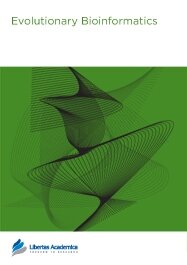

Publication Date: 02 Jun 2011
Type: Short Report
Journal: Evolutionary Bioinformatics
doi: 10.4137/EBO.S6761

Structurama is a program for inferring population structure. Specifically, the program calculates the posterior probability of assigning individuals to different populations. The program takes as input a file containing the allelic information at some number of loci sampled from a collection of individuals. After reading a data file into computer memory, Structurama uses a Gibbs algorithm to sample assignments of individuals to populations. The program implements four different models: The number of populations can be considered fixed or a random variable with a Dirichlet process prior; moreover, the genotypes of the individuals in the analysis can be considered to come from a single population (no admixture) or as coming from several different populations (admixture). The output is a file of partitions of individuals to populations that were sampled by the Markov chain Monte Carlo algorithm. The partitions are sampled in proportion to their posterior probabilities. The program implements a number of ways to summarize the sampled partitions, including calculation of the 'mean' partition—a partition of the individuals to populations that minimizes the squared distance to the sampled partitions.
PDF (465.23 KB PDF FORMAT)
RIS citation (ENDNOTE, REFERENCE MANAGER, PROCITE, REFWORKS)
BibTex citation (BIBDESK, LATEX)
XML
PMC HTML
Publishing in Air, Soil and Water and Water Research was the best experience I have had so far in an academic context. The review process was fair, quick and efficient. I congratulate the team at Libertas Academica for a very well managed journal.Magnus Karlsson (IVL Swedish Environmental Research Institute, Stockholm, Sweden) What Your Colleagues Say
Copyright © 2012 Libertas Academica Ltd (except open access articles and accompanying metadata and supplementary files.)
FacebookGoogle+Twitter
PinterestTumblrYouTube